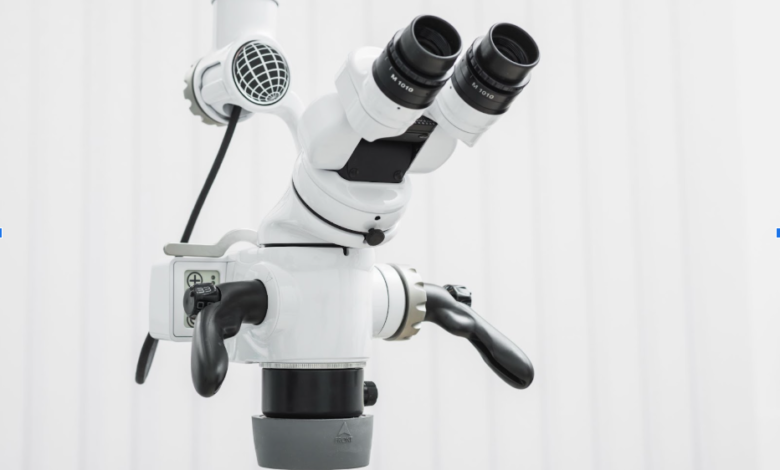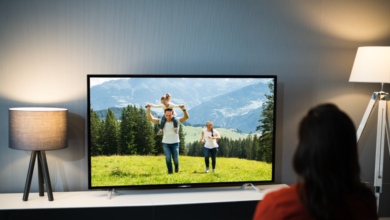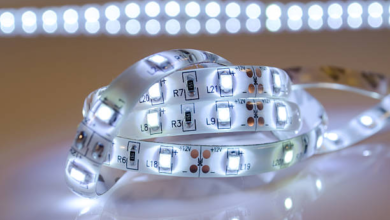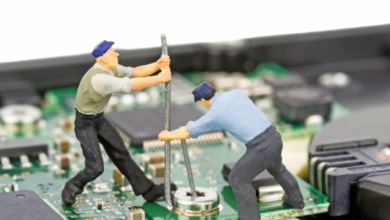How do I maintain and clean a modular stereo microscope?

Understanding Your Modular Stereo Microscope
A modular stereo microscope represents a sophisticated optical instrument that requires meticulous care and attention to maintain its precision and longevity. Unlike compound microscopes, stereo microscopes provide three-dimensional viewing capabilities through dual optical paths, making them invaluable for detailed examination of specimens, quality control processes, and intricate assembly work. The modular design allows for interchangeable components such as objectives, eyepieces, and illumination systems, which adds complexity to the maintenance routine but also provides flexibility in configuration.
The fundamental structure of these instruments consists of several critical components that each demand specific care protocols. The optical system includes objective lenses, eyepieces, prisms, and mirrors that work in harmony to deliver clear, distortion-free images. The mechanical components encompass the focusing mechanism, specimen stage, boom stand or table stand, and various adjustment controls. Modern units often incorporate sophisticated illumination systems featuring LED lights, fiber optic guides, and adjustable intensity controls that require their own maintenance considerations.
Understanding the intricacies of your specific microscope model is paramount before beginning any maintenance routine. Different manufacturers may use varying materials, coatings, and assembly methods that influence the appropriate cleaning techniques and maintenance schedules. The investment in a quality stereo microscope often reaches thousands of dollars, making proper maintenance not just advisable but economically essential for protecting this valuable equipment.
Essential Cleaning Supplies and Tools
Proper maintenance begins with assembling the correct cleaning supplies and tools specifically designed for optical instruments. Never use household cleaning products or improvised materials, as these can cause irreversible damage to delicate optical surfaces and precision mechanical components. The foundation of any microscope cleaning kit should include high-quality lens tissue or microfiber cloths specifically manufactured for optical applications. These materials are lint-free and chemically inert, ensuring they won’t scratch delicate lens surfaces or leave residues.
Professional lens cleaning solutions are formulated to dissolve oils, fingerprints, and other contaminants without damaging optical coatings. Isopropyl alcohol in concentrations of 70% or higher serves as an effective cleaning agent for most applications, but always verify compatibility with your microscope’s specific materials. Cotton swabs with wooden or plastic stems provide precision cleaning for small areas and tight spaces, while compressed air in cans helps remove dust and debris without physical contact.
Specialized tools enhance the cleaning process significantly. Lens cleaning pens combine a retractable brush for dust removal with a cleaning tip for removing stubborn marks. Anti-static brushes prevent dust accumulation during cleaning procedures. A set of precision screwdrivers allows for accessing internal components when necessary, though this should only be attempted by experienced users or professionals. Soft-bristled paintbrushes dedicated solely to microscope cleaning can gently remove debris from mechanical components without causing scratches.
Storage containers for cleaning supplies ensure materials remain clean and ready for use. A dedicated cleaning station or kit box prevents cross-contamination and makes routine maintenance more efficient. Investment in quality cleaning supplies pays dividends in maintaining optical clarity and extending instrument life, making it false economy to compromise on these essential materials.
Daily Maintenance Routines
Establishing consistent daily maintenance routines forms the cornerstone of microscope care and significantly extends instrument life while maintaining optimal performance. Each day’s work should begin with a visual inspection of the entire microscope system, checking for obvious damage, loose components, or accumulated debris. This preliminary assessment takes only minutes but can prevent minor issues from developing into major problems requiring expensive repairs.
The optical system requires daily attention, particularly the eyepieces and objective lenses that are most exposed to environmental contaminants. Begin by using compressed air to remove loose dust and particles from all optical surfaces. Hold the air canister upright and use short bursts rather than continuous streams to prevent condensation formation. Pay special attention to the junction areas where components connect, as these locations often accumulate debris that can work its way into the optical system.
After dust removal, examine each optical surface under good lighting conditions to identify any remaining contamination. Fingerprints, oil spots, or water marks require immediate attention using appropriate cleaning solutions and techniques. The sequence of cleaning should always progress from the least aggressive methods to more intensive procedures, starting with dry cleaning techniques before introducing liquids.
Mechanical components benefit from daily inspection and light maintenance. Check the focus mechanism for smooth operation, ensuring no binding or irregular movement occurs throughout the full range of motion. The specimen stage should be examined for cleanliness and proper alignment, with any debris removed using appropriate tools. Illumination systems require attention to ensure bulbs or LEDs function correctly and that light guides remain clean and properly positioned.
Documentation of daily maintenance activities provides valuable insights into developing issues and helps establish patterns that inform future maintenance decisions. A simple logbook noting observations, cleaning activities, and any unusual conditions creates a historical record that proves invaluable for troubleshooting and planning more extensive maintenance procedures.
See also: The Ripple Effect: How Scholarships Benefit High School Students
Deep Cleaning Procedures
Weekly or monthly deep cleaning procedures address accumulated contamination that daily maintenance cannot fully eliminate and ensure continued optimal performance of your modular stereo microscope. These more intensive procedures require additional time and care but are essential for maintaining the precision and clarity that justify the investment in quality optical equipment.
The deep cleaning process begins with complete system shutdown and careful disassembly of removable components. Remove eyepieces, objectives, and any modular accessories according to manufacturer procedures, taking care to note the orientation and position of each component for proper reassembly. Photograph complex assemblies if necessary to ensure correct reconstruction of the optical system.
Optical components receive the most attention during deep cleaning procedures. Each lens surface must be thoroughly cleaned using progressive techniques that begin with gentle methods and advance to more aggressive approaches only when necessary. Start with lens tissue dampened slightly with appropriate cleaning solution, working in a spiral pattern from the center of the lens outward to avoid redistributing contamination. Multiple passes with fresh tissue may be required for heavily contaminated surfaces.
Stubborn deposits such as immersion oil residues or dried biological materials may require extended soaking with appropriate solvents before mechanical removal. Exercise extreme patience during this process, as rushing can result in scratched surfaces that permanently degrade optical performance. Some contamination may require professional cleaning services to avoid damage to expensive optical components.
Mechanical cleaning focuses on removing accumulated lubricants, dust, and wear particles from moving components. The focus mechanism particularly benefits from periodic disassembly and cleaning, though this should only be attempted by experienced users familiar with the specific microscope model. Clean all accessible mechanical surfaces with appropriate solvents and apply fresh lubrication according to manufacturer specifications.
The microscope body and stand require attention to maintain both appearance and functionality. Use appropriate cleaning agents for the specific materials, whether painted metal, plastic, or composite construction. Pay attention to ventilation openings, control knobs, and connection points where debris commonly accumulates and can interfere with proper operation.
Optical Component Care
The optical system represents the heart of any stereo microscope and demands the highest level of care and attention during maintenance procedures. These precision-manufactured components often feature sophisticated multi-layer coatings designed to maximize light transmission and minimize reflections, making them particularly susceptible to damage from improper cleaning techniques or inappropriate materials.
Understanding the specific characteristics of your microscope’s optical components guides the selection of appropriate cleaning methods and materials. Modern objectives often incorporate low-dispersion glass elements and specialized coatings that require specific cleaning protocols. Anti-reflection coatings can be damaged by alkaline solutions, while some older coatings may be sensitive to alcohol-based cleaners. Consulting manufacturer documentation or contacting technical support ensures compatibility between cleaning agents and optical components.
The cleaning sequence for optical components follows a systematic approach that minimizes risk while maximizing effectiveness. Begin with the gentlest possible method, using compressed air to remove loose particles that could cause scratching during subsequent cleaning steps. Examine each surface carefully under adequate lighting to identify the nature and extent of contamination, as different types of deposits require different removal techniques.
For light contamination such as dust or slight fingerprints, dry cleaning with high-quality lens tissue often proves sufficient. Use a circular motion starting from the center of the lens and working outward, applying minimal pressure to avoid scratching delicate surfaces. Replace the tissue frequently to prevent redistribution of removed contaminants.
More significant contamination requires wet cleaning techniques using appropriate solvents. Apply cleaning solution sparingly to lens tissue rather than directly to the optical surface, maintaining control over the amount of liquid used. Excess solution can migrate to lens edges and potentially damage cement bonds or internal optical elements. Work quickly but gently, as prolonged contact with some solvents can damage certain coatings.
Special attention must be paid to the interface between optical components and their mechanical mountings. These areas often accumulate contamination that can migrate onto optical surfaces during operation. Use cotton swabs dampened with appropriate solvents to clean these junction areas, ensuring no liquid enters the optical assembly where it could cause internal fogging or coating damage.
Mechanical Parts Maintenance
The mechanical components of a modular stereo microscope require systematic maintenance to ensure smooth operation and prevent premature wear that can compromise instrument performance and accuracy. These precision-engineered systems depend on proper lubrication, alignment, and cleanliness to maintain the exacting standards required for professional microscopy applications.
The focusing mechanism represents the most critical mechanical system requiring regular attention. This assembly typically incorporates precision lead screws, bearings, and guide systems that must operate smoothly throughout the full range of motion. Daily operation naturally introduces wear particles and environmental contaminants that accumulate over time and can cause binding, irregular movement, or excessive play in the focusing system.
Regular inspection of the focus mechanism involves checking for smooth operation throughout the entire focusing range, noting any areas of increased resistance, play, or irregular movement. These symptoms often indicate the need for cleaning and relubrication of internal components. However, disassembly of focusing mechanisms should only be undertaken by experienced technicians familiar with the specific microscope model, as improper procedures can result in misalignment or damage to precision components.
External cleaning of mechanical components uses appropriate solvents to remove accumulated oils, dust, and debris without damaging finishes or introducing contaminants into sealed assemblies. Pay particular attention to exposed lead screws, guide rods, and bearing surfaces that directly impact focusing smoothness and accuracy. Use cotton swabs or soft brushes to access detailed areas while avoiding excessive moisture that could penetrate sealed components.
The specimen stage mechanism requires regular maintenance to ensure proper alignment and smooth operation of any mechanical positioning systems. Check for levelness using appropriate gauges and verify that any mechanical stage controls operate smoothly without binding or excessive play. Clean all accessible surfaces and apply appropriate lubricants according to manufacturer specifications.
Boom stands and support columns benefit from periodic inspection and maintenance to ensure stability and smooth operation of any positioning mechanisms. Check all locking mechanisms for proper operation and clean threaded components to prevent contamination buildup that can cause binding or reduce holding power. Verify that all joints and pivots operate smoothly and apply appropriate lubricants as needed.
Electrical System Care
Modern modular stereo microscopes often incorporate sophisticated electrical systems that require specific maintenance procedures to ensure reliable operation and prevent premature failure. These systems may include LED illumination, electronic controls, and digital interfaces that demand careful attention to electrical safety and component protection during maintenance procedures.
The illumination system represents the most commonly encountered electrical component requiring regular maintenance. LED light sources have largely replaced traditional incandescent bulbs, offering longer life and more stable light output, but they still require periodic cleaning and inspection. The LED housing and heat sink assemblies accumulate dust and debris that can impede heat dissipation and reduce light output or shorten component life.
Cleaning electrical components requires special precautions to prevent damage from static discharge or moisture intrusion. Always ensure the microscope is unpowered and disconnected from electrical sources before beginning any cleaning procedures involving electrical components. Use anti-static cleaning materials and techniques to prevent damage to sensitive electronic components.
Light guides and fiber optic systems require careful handling and cleaning to maintain optimal light transmission. These components can be damaged by excessive bending, crushing, or improper cleaning techniques. Clean the end faces of fiber optic guides using appropriate optical cleaning materials and techniques, taking care not to scratch the glass surfaces that can significantly reduce light transmission efficiency.
Electronic control systems may incorporate touch panels, switches, and digital displays that require specific cleaning procedures. Use appropriate cleaning agents that won’t damage electronic components or remove control markings. Avoid excessive moisture that could penetrate electronic assemblies and cause corrosion or short circuits.
Power supply units and electronic control boxes benefit from periodic cleaning to remove dust accumulation that can impede heat dissipation and reduce reliability. Use compressed air to remove dust from ventilation openings and internal components, taking care not to dislodge internal connections or components. Check all external connections for tightness and signs of corrosion that could affect system reliability.
Storage and Environmental Considerations
Proper storage and environmental control significantly impact the maintenance requirements and longevity of modular stereo microscopes. These precision instruments are sensitive to temperature fluctuations, humidity variations, dust accumulation, and chemical contamination that can accelerate wear and degrade performance over time.
Temperature stability is crucial for maintaining optical alignment and preventing thermal stress in precision components. Avoid locations subject to direct sunlight, heating vents, or other sources of temperature variation that can cause expansion and contraction cycles leading to misalignment or component stress. Gradual temperature changes are preferable to rapid fluctuations that can cause condensation formation or thermal shock.
Humidity control prevents condensation formation on optical surfaces and reduces corrosion of metal components. Excessive humidity can cause fogging of internal optical elements that may require professional service to resolve. Conversely, extremely low humidity can increase static electricity buildup that attracts dust and debris to optical surfaces. Maintain humidity levels between 40% and 60% relative humidity when possible.
Dust control measures significantly reduce maintenance requirements and extend service intervals. Covering the microscope with appropriate protective covers when not in use prevents dust accumulation on optical surfaces and mechanical components. Ensure covers are clean and lint-free to avoid introducing additional contamination. Some environments may benefit from positive air pressure or filtration systems to reduce airborne contamination.
Chemical contamination from laboratory environments can cause accelerated degradation of optical coatings and mechanical components. Provide adequate ventilation to prevent accumulation of corrosive vapors, and consider the use of protective enclosures in harsh chemical environments. Regular cleaning becomes even more critical in contaminated environments to prevent permanent damage from aggressive chemical exposure.
Storage procedures for extended periods require additional precautions to prevent deterioration during inactive periods. Remove batteries from electronic components to prevent corrosion from leakage. Apply appropriate preservation treatments to metal surfaces prone to corrosion. Store optical components in protective containers with desiccants to control moisture levels and prevent fungal growth on optical surfaces.
Troubleshooting Common Issues
Effective troubleshooting requires systematic approaches to identify and resolve common problems that can develop in modular stereo microscopes. Understanding typical failure modes and their symptoms enables rapid diagnosis and appropriate corrective action, minimizing downtime and preventing minor issues from developing into major problems requiring expensive repairs.
Image quality degradation often manifests as reduced sharpness, decreased contrast, or visible artifacts that interfere with specimen observation. These symptoms can result from contaminated optical surfaces, misaligned components, or damaged optical elements. Begin troubleshooting by systematically cleaning all optical surfaces and verifying proper component alignment before considering more complex internal issues.
Focus mechanism problems typically present as binding, irregular movement, or inability to achieve sharp focus throughout the working range. These issues often result from contamination of mechanical components, dried lubricants, or wear in precision bearing surfaces. Systematic cleaning and relubrication of accessible components often resolves these problems, though internal mechanism issues may require professional service.
Illumination problems can range from complete failure to uneven light distribution or color temperature variations. LED systems generally require less maintenance than traditional bulbs but can still develop problems related to driver circuits, heat dissipation, or optical component contamination. Verify power connections and clean optical components before considering component replacement.
Mechanical instability manifests as vibration, drift, or inability to maintain specimen position during observation. These problems often result from worn or improperly tightened mechanical components, contaminated bearing surfaces, or inadequate environmental vibration isolation. Systematic inspection and tightening of mechanical connections often resolves these issues.
Electronic system problems may involve control failures, display issues, or communication problems with digital accessories. These complex systems often require specialized diagnostic equipment and should generally be referred to qualified service technicians. However, basic troubleshooting such as verifying power connections, checking fuses, and ensuring proper grounding can resolve some common problems.
Professional Service Requirements
Despite diligent maintenance practices, modular stereo microscopes periodically require professional service to address issues beyond the scope of routine user maintenance. Understanding when to seek professional assistance prevents damage from inappropriate repair attempts and ensures continued optimal performance of these precision instruments.
Major optical component issues such as damaged lenses, misaligned optical systems, or contaminated internal elements typically require professional service capabilities. These problems often involve disassembly of sealed optical assemblies, specialized cleaning techniques, or precision alignment procedures that demand specific tools and expertise. Attempting these repairs without proper training and equipment can result in irreversible damage to expensive optical components.
Mechanical system overhauls involving focus mechanism rebuilding, stage mechanism repair, or stand component replacement generally exceed user maintenance capabilities. These procedures require specialized tools, replacement parts, and expertise in precision mechanical assembly techniques. Professional service ensures proper component selection, installation procedures, and final calibration to maintain manufacturer specifications.
Electronic system repairs almost invariably require professional service due to the complexity of modern electronic components and the specialized diagnostic equipment required for proper troubleshooting. Circuit board repairs, component replacement, and system calibration demand expertise in electronic systems and access to specialized test equipment not typically available to end users.
Calibration and alignment verification should be performed periodically by qualified service technicians to ensure continued optimal performance. These procedures verify that the microscope meets manufacturer specifications for optical performance, mechanical accuracy, and electronic system operation. Professional calibration often reveals developing issues before they become apparent to users, enabling preventive maintenance that avoids more expensive repairs.
Warranty considerations often require that certain service procedures be performed by authorized service providers to maintain warranty coverage. Review warranty terms and conditions to understand which maintenance activities can be performed by users and which must be delegated to professional service providers to avoid voiding warranty protection.
Preventive Maintenance Schedule
Implementing a systematic preventive maintenance schedule ensures consistent care of your modular stereo microscope while distributing maintenance activities over time to avoid overwhelming workloads or extended downtime periods. This structured approach helps identify developing issues before they become serious problems and maintains optimal instrument performance throughout its service life.
Daily maintenance activities require only a few minutes but provide the foundation for long-term instrument reliability. These activities include visual inspection for obvious damage or contamination, basic cleaning of exposed optical surfaces, and verification of proper illumination system operation. Documenting daily observations in a maintenance log creates valuable historical data for troubleshooting and service planning.
Weekly maintenance expands on daily activities with more thorough cleaning procedures and systematic inspection of mechanical components. This includes detailed cleaning of eyepieces and objectives, inspection of the focus mechanism for smooth operation, and verification of proper stage alignment and operation. Weekly maintenance also provides opportunity to address any issues identified during daily inspections.
Monthly maintenance involves more extensive procedures such as deep cleaning of optical components, thorough mechanical system inspection, and electrical system verification. This is appropriate timing for detailed cleaning of internal optical surfaces accessible through component removal and systematic lubrication of mechanical components according to manufacturer specifications.
Quarterly maintenance schedules major cleaning and inspection activities that require extended time commitments. These procedures may include partial disassembly for internal cleaning, comprehensive mechanical system inspection and adjustment, and electrical system testing and calibration verification. Quarterly maintenance provides opportunity to address cumulative issues that develop over extended operating periods.
Annual maintenance represents the most comprehensive service activity and may include professional service for complex procedures beyond user capabilities. Annual service typically involves complete optical system inspection and cleaning, mechanical system overhaul if necessary, and electrical system calibration verification. This timing also provides opportunity for warranty service and documentation of compliance with maintenance requirements.
Certified Material Testing Products (Certified MTP) is a leading supplier of construction materials testing equipment and laboratory supplies in the United States. They offer a comprehensive range of products for testing concrete, asphalt, aggregate, soil, and cement, catering to both field and laboratory applications. However, regardless of whether they are preferred or not, the underlying concept behind these tools is similar: achieving a polished, shiny, and permanent effect. Whether new to stucco or a seasoned pro, investing in quality tools and learning the nuances of their use is what will help you perfect your craft.
Frequently Asked Questions
How often should I clean the optical components of my stereo microscope?
The frequency of optical component cleaning depends on your operating environment and usage patterns. In typical laboratory conditions, daily cleaning of exposed surfaces like eyepieces and objectives is recommended, with more thorough weekly cleaning of all accessible optical surfaces. Harsh environments or heavy usage may require more frequent cleaning, while clean environments with light usage may allow extended intervals. The key is to clean optical surfaces before contamination becomes heavy enough to require aggressive cleaning techniques that risk damage.
What cleaning solutions are safe to use on microscope lenses?
Commercial lens cleaning solutions specifically formulated for optical instruments are the safest choice for microscope maintenance. These solutions are designed to dissolve common contaminants without damaging optical coatings or glass surfaces. Isopropyl alcohol in 70% concentration or higher is generally safe for most applications but should be tested on inconspicuous areas first. Avoid household cleaners, acetone, or other aggressive solvents unless specifically approved by the manufacturer, as these can damage optical coatings or plastic components.
Can I disassemble my microscope for deeper cleaning?
The extent of disassembly appropriate for user maintenance varies significantly between microscope models and user experience levels. Generally, removal of eyepieces, objectives, and external accessories is acceptable for most users following manufacturer procedures. However, disassembly of internal optical systems, focus mechanisms, or sealed components should be left to qualified service technicians to avoid damage or misalignment that can be expensive to repair.
How do I know when my microscope needs professional service?
Several indicators suggest the need for professional service beyond routine user maintenance. These include persistent image quality problems that don’t respond to cleaning, mechanical binding or irregular operation that continues after cleaning and lubrication, electrical system failures or intermittent operation, and any physical damage to optical or mechanical components. Additionally, annual professional inspection is recommended even for well-maintained instruments to verify continued optimal performance.
What environmental conditions are best for microscope storage?
Optimal storage conditions include stable temperature between 15-25°C (59-77°F), relative humidity between 40-60%, minimal dust exposure, and protection from direct sunlight or strong artificial lighting. Avoid areas subject to vibration, chemical contamination, or rapid temperature changes that can cause condensation formation. When storing for extended periods, use protective covers, remove batteries from electronic components, and consider desiccants to control moisture levels in storage containers.
How can I prevent dust accumulation on my microscope?
Dust prevention strategies include using protective covers when the microscope is not in use, maintaining positive air pressure in work areas when possible, regular cleaning of work surfaces and surrounding areas, and proper HVAC filtration to reduce airborne particles. Additionally, anti-static treatments on covers and work surfaces can reduce dust attraction, while regular cleaning prevents accumulation that becomes more difficult to remove over time.
What should I do if liquid gets inside my microscope?
Immediate action is crucial if liquid enters your microscope. Immediately disconnect power if the microscope has electrical components, remove any detachable parts that may have been affected, and contact professional service providers for guidance. Do not attempt to operate the microscope until it has been professionally inspected and serviced, as liquid contamination can cause corrosion, optical damage, or electrical hazards that worsen with continued operation.
How do I maintain the illumination system in my stereo microscope?
Illumination system maintenance includes regular cleaning of light guides and optical surfaces, verification of proper bulb or LED operation, cleaning of heat sinks and ventilation areas to prevent overheating, and periodic inspection of electrical connections for tightness and corrosion. LED systems generally require less maintenance than traditional bulbs but still benefit from regular cleaning and heat dissipation verification to ensure optimal performance and longevity.







